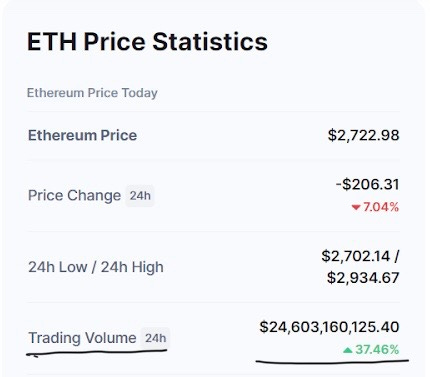End of free Twitter, TradFi finally getting over its Crypto hesitancy, and a 7-hour Outage on Solana!
A crazy time for DeFi and... the tokenomics of Ethereum explained.
101 today:
A topic we explain —
The Tokenomics of Ethereum.
Major happenings in the DeFi ecosystem —
TradFi getting over its Crypto Hesitancy and a 7-hour Outage on Solana.
A Goldmine of a Twitter thread that sums it all up —
This weekend was very happening in the DeFi space - a thread for you to catch up on!
A peek behind the doors —
Super fun series of Twitter Spaces Event lined up!
Earn high yield returns in DeFi with one click.
Transfer funds securely through Apple Pay and earn up to 10% APY with Brew Money.
Questions? Mail us.
One Topic:
Carrying over from our last edition, we’ll cover the major points on the Ethereum Tokenomics today:
Let’s get started!
Supply:
Ethereum Users: People who hold ETH passively or actively invest it in DeFi are called Ethereum users. They incur base gas fees or priority fees when they transact on the Ethereum network.
A base fee keeps changing based on the congestion level of the network. Users can choose to pay it or transact later when the fees drop. The base fee is later burned, which reduces the supply of ETH.
The optional fees/tip is a voluntary fee that a user may give to miners to get their transaction some priority. This fee is not burned and has no effect on the supply of ETH.


Look at ETH burning real-time here: Watch the burn
Ethereum Miners: Miners are given a block reward of 2ETH for validating the network. This increases the ETH supply and dilutes the existing circulation. Have a look at the market cap and the diluted market cap below:
Demand:
The demand for ETH can be tracked through:
No. of transactions on the Ethereum network
The no. of transactions on ETH went up during 2021 aka the DeFi summer but has remained flat during most of 2022. The launching of ETH 2.0 aims to solve high gas fees problems and may prove to be a tipping point for the network.
No. of active wallets holding ETH
Trading Volume
All of these ecosystem metrics point towards a general higher demand for ETH. With the introduction of Ethereum 2.0, transaction fees on the network are expected to go down and the demand to rise further higher.
Under Eth2’s PoS, the issuance rate is dramatically lower and is expected to range from 0.5% to 1+% based on some reasonable assumptions. The burning of base fees too, is expected to reduce the supply further by 1.5%.
Since the demand is expected to rise higher and the supply to fall, it is possible that the price of ETH may rise.
We’ll continue talking about the significance of the current supply & demand of ETH tokens in our next edition. It also remains to be seen how Ethereum’s transfer from PoW to PoS will affect its tokenomics.
For now, stay tuned and get all DeFi knowledge in one email:
If you are on a binge roll, you can read more on the Tokenomics of Ethereum here:
Pssst..Don’t forget we’ll be explaining it all in much simpler terms in our next edition.
We also create DeFi threadoooors on Twitter every week. You can ask questions directly via DM. Find us: @brew_defi
News that made people go 🤯:
👀Days after Twitter Acquisition, Musk Announces it may not be Free for all 😶
On 4th May 2022, in what came as a shocker, @elonmusk tweeted, "Twitter will always be free for casual users, but maybe a slight cost for commercial/government users." His recent tweets point toward a possible end to free Twitter.
Read more about it here:


👀Goldman Sachs issues first cash loan secured by cryptocurrency 🏦
The banking and investment giant @GoldmanSachs issued its first cash loan secured by Bitcoin. The borrower received fiat currency instead of dollar-pegged stablecoins used by other DeFi lending protocols. The purpose of DeFi loans was to eliminate the intermediaries - the opposite of borrowing from Goldman Sachs. It shows that the TradFi space might be getting over its crypto hesitation. Read more about it here.
👀Solana experiences a 7-hour outage due to NFT-minting bots invasion 🤖
@solana's PoS blockchain was brought to a halt again for a record seventh time this year for seven hours. The outage on May 1 was caused by "botting" on an NFT marketplace built on the blockchain. They made over 4 million transactions, or 100 gigabits of data per second, congesting the network. The validators had to restart the entire main network manually. Read more about it here.
One Tweet:
This weekend was happening in the DeFi space. Missed it? Don’t worry! We got your back. Catch-up here:

Now, an update:
As updated in the last edition of our newsletter, we’re hosting a series of Twitter spaces event with various DeFi personalities this month. We will be covering everything starting from DeFi for beginners to advanced. We also have something exclusive (hint: NFTs) waiting for our newsletter subscribers during the event.
Follow @brew_defi to keep track! We can’t wait to hear from you!
That’s it for today, folks. See ya next Friday. 🎩









